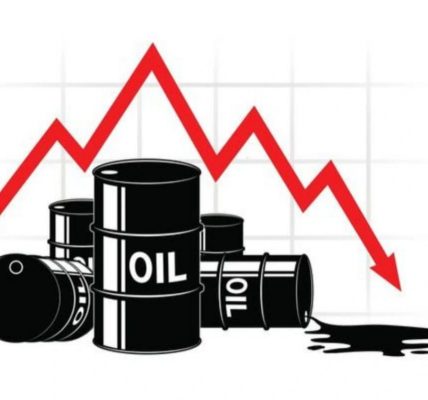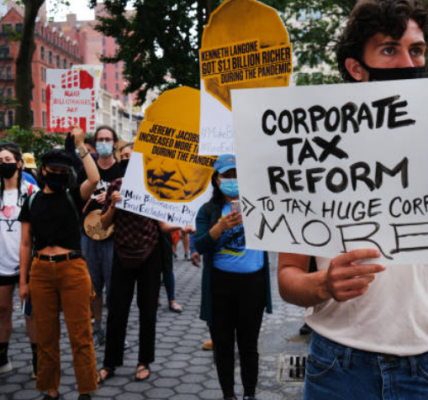Asian Infrastructure Investment Bank and Asian Development Bank sanction loans for Pakistan: Four Takeaways
Pakistan’s road to recovery is shaped through relentless assistance and reconstruction
On 22 October 2022, the Asian Development Bank (ADB) authorised a loan of USD 1.5
billion in funds to support Pakistan in alleviating food security, laying out social protection,
and increasing employment for its people after the destruction caused by climate-induced
floods and global supply chain crises. The loan would monitor the evaluation framework
between the ADB and the government and comes as the single largest inflow of funds since
Pakistan received USD 1.1 billion from the IMF in August 2022. On 26 July 2024, the ADB
announced an additional boost of USD 400 million to “boost” Pakistan’s economy, with the
bank willing to facilitate flood recovery projects that build and develop houses, drinking
water facilities and the development of alternative energy resources as part of its repo. With
the ADB laying out preliminary support in October 2022, on 9 October, the Asian
Infrastructure Investment Bank (AIIB) also approved additional funds of USD 500 million
for the co-financing for the BRACE development programme, and to support Pakistan in its
efforts to counter the social fallouts of the economic crisis
With the precedence of these loans, what are the key areas of replenishment that Pakistan
needs? This brief looks at four reasons why this loan is important for Pakistan:
First, the BRACE programme. The ADB announced that the loan would be given under the
ADB’s Building Resilience with Active Countercyclical Expenditures (BRACE) Programme,
which would sustain the government’s USD2.3 billion anticyclical development expenditure
program made to soften the impacts of the external shocks Pakistan has endured as a result of
the Russian invasion of Ukraine and external global setbacks (ADB, 2022). The loan entails
only USD 250 million as concessional, while the USD 1.5 billion is a regular loan. The AIIB
has not updated the terms of the co-financing, which is imperative to the functioning of the
BRACE. The USD1.5billion by the ADB and the USD 500 million by the AIIB lay USD
300 million short of the government’s nearly three million dollar cyclical development
programme. Still, they would support Pakistan’s foreign exchange reserves and rein in the
Pakistan Rupee’s (PKR) depreciation.
The BRACE action plan seeks to support the government’s efforts to deal with the adverse
effects of devastating floods, supply chain disruptions, and increasing energy and fuel prices.
Additionally, the programme is holistically aligned with the government’s strategy to counter
risks and promote economic management, underlining Pakistan’s dependence on the ADB,
and recalibrating the country’s cost-defective policies (Pakistan Observer, 2024).
Second, the loan’s impending support to the flood-devastated regions of the country. The
country has seen destructive impacts of the flood, with losses estimated up to USD 30 billion.
International agencies including the ADB have warned of an escalating increase in poverty
levels, widening fiscal deficits, and external deficiencies in cascading foreign exchange
reserves. Already pooling in USD 2.3 billion to flood relief in the country, the ADB has
apprised the country of resources to support Balochistan as well. The country is in the midst
of a massive economic and political crisis, which is amounting to doubt regarding the
government’s capacity to rebuild the country to its stride. For most of its work in Asia, the
ADBis credited with bringing productive outcomes to its lenders, mostly in terms of
enhancing environmental jurisprudence (Nagpal and Pak, 2019). As climate change has
intensified in Pakistan over 2 years, the organisation’s judiciary plays an important role in
climate change governance, particularly in mitigating and adapting policies and plans that
interpret disaster risk and environmental challenges.
ADB’s funding would provide much-needed fiscal space for the government to execute its
countercyclical development expenditure package, which is created to help the poorest
families in Pakistan who are incessantly and disproportionately affected in times of
devastation and crises, as well as specific measures to promote gender empowerment and
climate change adaptation. The loan from ADB, however, would help expand the number of
families receiving compensation from 7.9 million to 9 million and would increase the
geographic scope of health services in the country (Sherani, 2021).
Third, sifting through the package into bigger economic objectives. Making known that the
package being offered is part of a “comprehensive and well-coordinated package of support”,
the ADB said that it would help Pakistan sustain the consequences of immediate changes in
the economy, as well as build structural reforms that are imperative to build the country’s
macroeconomic prospects (Khan and Kim, 1997). The PKR saw an increase of 0.31 per cent
in the previous week after the ADB sanctioned the loan. Assessing that this could improve
the momentum of the PKR, the loan has proved to be of imperative value since it has been
sanctioned. This funding is also aligned with the bank’s country partnership strategy for
Pakistan for 2021-2025, where the ADB has committed over USD37 billion in loans to the
country, in an expansive effort to improve Pakistan’s economic and social challenges,
strengthen economic governance, and promote growth and development (Attarwala, 2024).
The promised objectives include rebuilding homes and bolstering the livelihoods of those
affected, to “provide a crucial lifeline” to the vulnerable communities in the country.
Fourth, directing efforts to maximise assistance provided by agencies like the ADB. The
ADB, among other international agencies, has led the effort to provide Pakistan with the
support it needs to redirect its priorities into revitalising the Pakistani economy. With 48 loans
and 3 grants worth USD 8.42 billion, the ADB has holstered Pakistan’s recovery path with
abundant resources to reconstruct its economy and has calibrated the financial structures of
the system in more significant ways than one (Ahmed, 2023). This loan is important to
Pakistan because it not only moulds the flood-ridden areas of the country but also improves
the livability and community health of the provinces in the country. A loan as cohesive as this
embraces economic capacity building and builds private ownership within the country’s
resources. With the ADB being the second largest source of multilateral financing to
Pakistan, the bulk of the loans have occured under various structural adjustment programmes
and to support Social Action Programmes that have contributed to macroeconomic shifts and
showed signs of improvements in the years they have been implemented (Anwar, 2006).
Fifth, escalation of debt. The government’s current expenses amounted to PKR 1,832 trillion
from July to September (Ahmed, 2024). Out of this, PKR 954 billion was used for domestic
and foreign debt servicing, with the domestic debt servicing piled at nearly 50 per cent of the
current federal expenses of the government, which is unnerving to the economic positioning
of the country. This escalation in debt servicing cites the inescapable unpredictability of the
government’s policies to tackle the issue, with domestic debt servicing rising as long as the
borrowing continues.(David de Padua, Lanzafame, Qureshi, & Taniguchi, 2024).
Further, foreign debt servicing will cost more in domestic currency if the PKR sees a
consistent downturn with the US dollar. Even though substantial loans and aid will help the
PKRsee a gain, the economic stability of these loans will be momentary and compromise the
development expenses of the country. The cyclical nature of Pakistan’s financial system will
create a void in the country’s priorities; furthering external assistance and extenuating the
economy’s capacity to handle future crises and instability. IANS (2024) reports that the State
Bank of Pakistan, which had set the inflation target at 21 per cent for the current fiscal year, is
a target that will be missed despite “wreaking colossal losses” at a time of an aggravating
economic crisis. With escalating conflicts in the Middle East negatively affecting the
country’s supply chain disruptions, external financing requirements and weak external
buffers, the ADB, along with the IMF, are crucial partners for the government to maintain its
public spending and direct its market sentiment in significant, necessary ways.
References:
ANWAR,M.(2006, July). THE POLITICAL ECONOMY OF INTERNATIONAL
FINANCIAL INSTITUTIONS’ LENDING TO PAKISTAN. Pakistan Economic and Social
Review, 44(2), 155–180. https://www.jstor.org/stable/25825292
Staff, W. D. (2024, May 3). UNFPA Pakistan, SoLF start BRACE for climate action,
emergency preparedness. Pakistan Observer.
https://pakobserver.net/unfpa-pakistan-solf-start-brace-for-climate-action-emergency-prepare
dness/
Nagpal, R., & Pak, C. (2019). The Role of Dispute Resolution and Economic Development
International Organizations and the Promotion of Effective Dispute Resolution. AIIB
Yearbook of International Law 2019. Volume 2.
https://library.oapen.org/bitstream/handle/20.500.12657/38057/9789004407411_webready_c
ontent_text.pdf?sequence=1#page=170
Bank, A. D. (2022, October 21). $1.5 Billion ADB Financing to Promote Social Protection,
Food Security in Pakistan. Asian Development Bank.
https://www.adb.org/news/1-5-billion-adb-financing-promote-social-protection-food-security-pakistan
Khan, A. H, Kim, Y.H (1997, July). Foreign Direct Investment in Pakistan: Policies and
Trends. The Pakistan Development Review, 36(4II), 959–985.
https://doi.org/10.30541/v36i4iipp.959-985
David de Padua, Lanzafame, M., Qureshi, I., & Taniguchi, K. (2024, July). Understanding the
Drivers of Remittances to Pakistan. Asian Development Bank.
Doi:https://doi.org/10.22617/wps240348-2
IANS. (2024, April 14). ADB report paints disconsolate picture of Pakistan’s economy. The
Statesman.
https://www.thestatesman.com/world/adb-report-paints-disconsolate-picture-of-pakistans-eco
nomy-1503290148.html
Desk, W. (2024, July 27). Pakistan to get $400mln from ADB. ARY NEWS.
https://arynews.tv/pakistan-to-get-400mln-from-adb/
Ahmed, A. (2024, April 11). Pakistan’s economic outlook uncertain with high risks on the
downside: ADB report. DAWN.COM. https://www.dawn.com/news/1826931
Attarwala, F. S. (2024, May 12). ADB links support with IMF’s clean chit. DAWN.COM.
https://www.dawn.com/news/1833000
Sherani, T. (2021, December 22). Pakistan, ADB sign agreements worth $1.5bn for various
projects. DAWN.COM. https://www.dawn.com/news/1665214
Ahmed, A. (2023, December 10). Pakistan to benefit from ADB resilient cities project.
DAWN.COM.https://www.dawn.com/news/1796626






